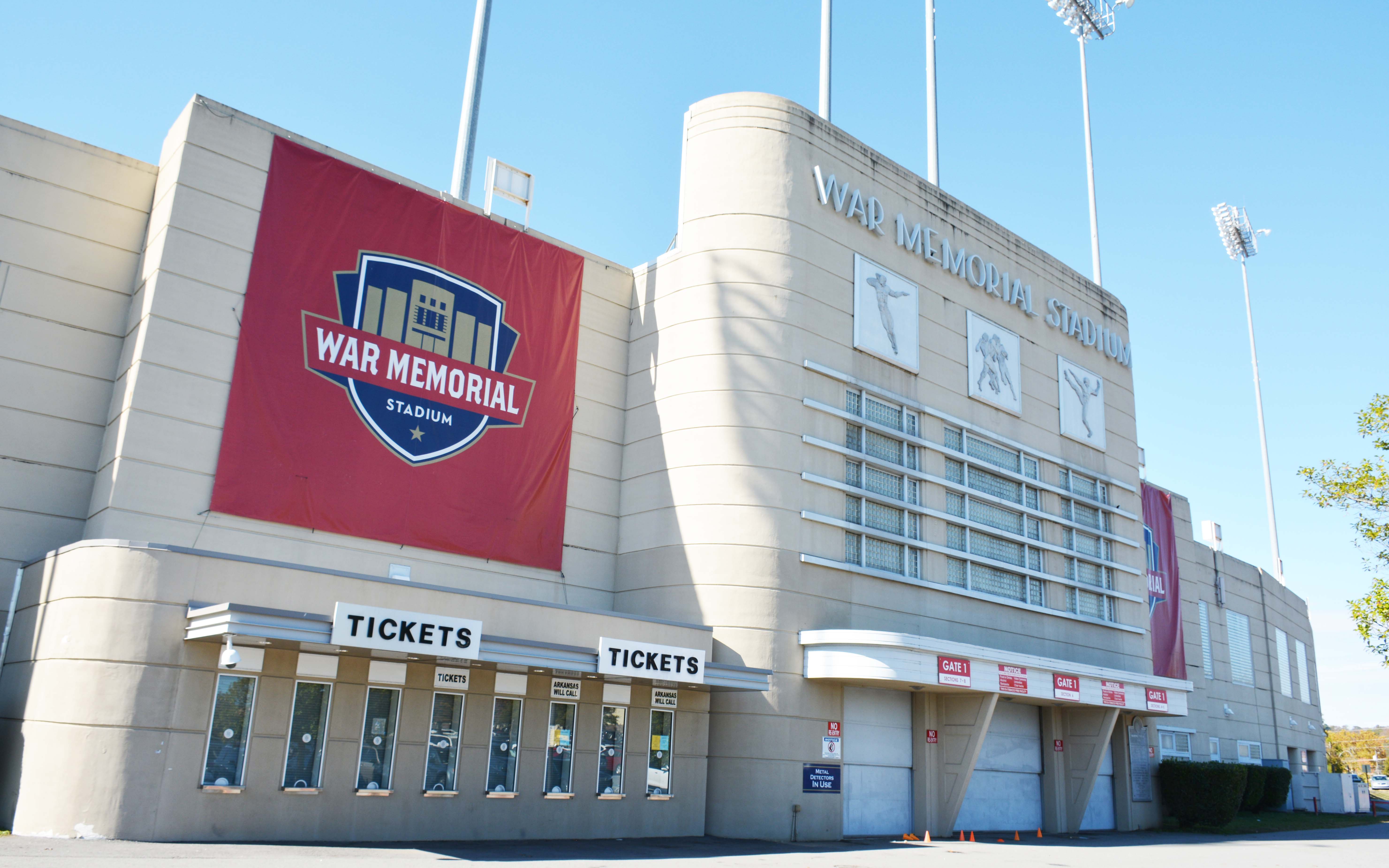Natural State of Architecture
December 3-9, 2018
By Mason Toms
On Nov. 11, we take time to remember those who have fought and died in the armed forces to protect our freedom. While there are many monuments and memorials across the state constructed to immortalize the lives and heroics of these people, one memorial stands out above the rest – War Memorial Stadium in Little Rock. However, it is not the size of War Memorial Stadium that points to its significance, but the ideas that the impressive structure embodies that makes it noteworthy.
Designed by Little Rock architects, Anderson and Burks, War Memorial Stadium is one of the largest examples of Art Moderne architecture in the state. The style was an evolution of Art Deco architecture from the 1920s and 1930s. Though Art Moderne featured geometric massing and patterns like Art Deco, it was simplified and streamlined, hence the style’s other name ‘Streamline Moderne’. Art Moderne was a much more horizontal style than Art Deco, with architectural features that emphasized the width of the building and rounded corners of glass block. Due to the simplification of ornament and the increased horizontal influence in the design, Art Moderne architecture is commonly seen as a stepping stone between Art Deco and International Style architecture. In the popular consciousness, Art Moderne was most closely associated with movement and transportation design, specifically that of cruise liners and bus stations. In fact, the Greyhound Bus Company helped to popularize the style with their iconic Art Moderne stations during the late 1930s, one of which stands in downtown Blytheville, Arkansas. The style originally emerged in the early 1930s in the Western United States but did not become popular in Arkansas until the mid-1940s. Though Little Rock has lost several fantastic examples of the style, a few great buildings, such as the 1947 Winchester Building at Spring and 8th and the 1947 Stebbins & Roberts Building at Shall and 6th, still survive in the city.
The stadium was completed in 1948 and held its first event, a football game between the University of Arkansas and Abilene Christian, on Sept. 18 of that year. The stadium was officially dedicated to those that served in both World Wars at the start of the game by a former Razorback football player and Metal of Honor recipient, Maurice Britt. The new building was to preserve the memory of those lost in the wars in a different way than memorials of the past. Prior to the 1940s, war memorials were typically a beautifully carved sculptural piece that stood solemnly on an open lawn. A place visited for the sole purpose of remembering those lost. However, after World War II there was an idea that memorials should be more functional and by being so, they would better immortalize the memory of those they represented. This idea was part of a nationwide movement to create memorials that better served the memories of those lost, not only practically, but also emotionally. The solemn mood of the remembrance would be offset by the hosting of spirited events which embodied the freedoms that those lost fought to protect. In this spirit, the stadium has hosted over 200 Razorback football games as well as countless high school football games, concerts, and special events since its opening. The venue even hosted President Harry Truman when he came to Little Rock in 1949 to officially dedicate War Memorial Park, which surrounds the stadium.
Though many of the veterans of the World Wars have since passed, War Memorial Stadium still stands as an enduring testament to their sacrifice. Sometimes the natural state of architecture is of tribute and a promise that we will not forget. Even if the future of War Memorial Stadium at times seems dubious, it will always hold a special place in the hearts of Capital City residents and will continue to be a reminder of those who made us who we are.
PHOTO CAPTION:
An example of the Art Moderne style, Little Rock’s War Memorial Stadium followed the trend in making memorials more functional than the solemn statues of the past. The idea is that a functional structure would better immortalize the memories of those it represents. (Photo by Mason Toms)



